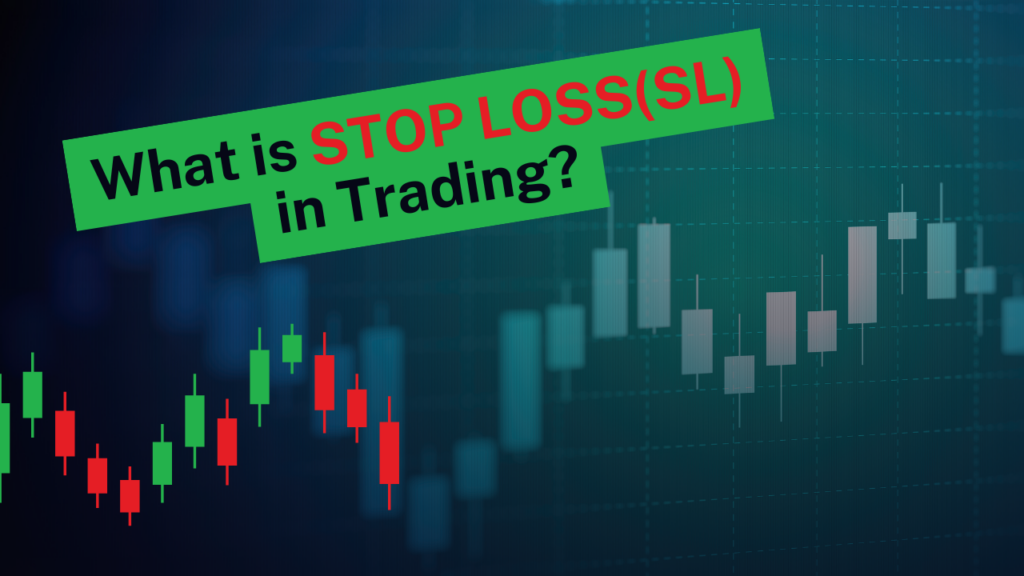In trading, risk management is the cornerstone of success. Among the various tools available to traders, the Stop Loss (SL) stands out as one of the most effective methods for safeguarding your capital. A properly used stop loss can distinguish a seasoned trader from a novice, helping to limit losses and preserve your account through volatile markets.
This guide will explain what a stop loss is, why it’s crucial, common mistakes traders make when using it, and strategies for maximizing its effectiveness.
What is a Stop Loss in Trading?
A Stop Loss (SL) is an order placed with your broker to automatically close a position when the price of an asset reaches a specific level. Its purpose is simple: to limit your loss when the market moves against your position.
For instance, if you buy a stock at $100 and set a stop loss at $95, the position will be automatically closed if the price drops to $95. This limits your loss to $5 per share, ensuring you don’t lose more than you’re prepared to risk.
Why is Stop Loss Essential?
- Preserves Capital: Trading is about surviving the long term. Stop losses prevent large losses that can deplete your account and end your trading career prematurely.
- Eliminates Emotional Decisions: In volatile markets, emotions like fear and greed can cloud judgment. A stop loss ensures your trades follow a predetermined plan.
- Manages Risk Consistently: By setting a stop loss, you predetermine the amount you’re willing to lose on each trade, which helps maintain consistency and discipline in your trading approach.
Common Stop Loss Mistakes to Avoid
While the concept of a stop loss is straightforward, improper use can undermine its effectiveness. Here are some of the most frequent errors traders make:
- Avoiding Stop Losses Altogether Some traders avoid setting stop losses, hoping the market will reverse in their favor. This approach can lead to catastrophic losses, as the market doesn’t always cooperate. Trading without a stop loss is akin to driving without brakes—dangerous and unsustainable.
- Widening Stop Losses When the price approaches their stop loss, some traders move it further away, hoping the market will turn around. This practice often leads to even larger losses. Accept small losses as part of trading and resist the urge to "chase" the market.
- Moving Stop Losses to Breakeven Too Soon Moving a stop loss to breakeven too early in a trade may protect you from losses but can also prematurely close potentially profitable trades. Allow trades enough room to breathe by waiting for significant price movement before adjusting the stop loss.
- Setting Stop Losses at Obvious Levels Placing stop losses at predictable levels—such as just below support or above resistance—can make them targets for stop-loss hunting. Large market players exploit these predictable levels to trigger stop orders and generate liquidity.
- Relying on Mental Stop Losses A "mental" stop loss, where you decide to exit manually if the price reaches a certain level, is unreliable. Traders often hesitate or make emotional decisions, leading to larger-than-expected losses.
Effective Stop Loss Strategies
To use stop losses effectively, consider adopting one or more of these proven strategies:
- Use the Average True Range (ATR) for Dynamic Stop Losses The Average True Range (ATR) measures market volatility, helping you place stop losses at appropriate levels based on the current market environment.
For example, if the ATR of a stock is $2, a stop loss placed $2–$3 away from the entry point gives the trade room to breathe without being prematurely stopped out.
- Leverage Moving Averages as Dynamic Stops In trending markets, moving averages like the 8-period or 20-period Exponential Moving Average (EMA) can serve as dynamic stop loss levels.
For a long position, place the stop loss just below the EMA, allowing the trend to guide your trade while protecting against a reversal.
- Use Percentage-Based Stop Losses A percentage-based stop loss limits your loss to a fixed portion of your account size, ensuring consistency in risk management.
For instance, if you’re risking 1% of a ₹5,00,000 account, your maximum allowable loss per trade is ₹5,000. Adjust your position size accordingly.
- Combine Stop Loss with Position Sizing Calculate your position size based on the distance between your entry price and your stop loss level. This approach ensures your risk per trade remains consistent.
Example: If your stop loss is 10 points away, and you’re risking ₹1,000 per trade, your position size should be 100 shares or contracts.
Why Traders Avoid Stop Losses
Despite its benefits, some traders hesitate to use stop losses. Here’s why and why it’s a mistake:
- Ego: Traders may view a stop loss as admitting they were wrong. However, the market is unpredictable, and accepting losses is a sign of professionalism, not failure.
- Fear of Missing Out (FOMO): Traders avoid stop losses, fearing they might exit a trade prematurely and miss out on profits. This mindset often leads to significant losses.
- Lack of Discipline: Trading without stop losses reflects an undisciplined approach, which rarely leads to long-term success.
Conclusion: Mastering Stop Loss for Trading Success
Using a stop loss is not just a precaution—it’s a vital component of a successful trading strategy. It protects your capital, ensures emotional discipline, and allows you to survive and thrive in the volatile world of trading.
To make the most of stop losses:
- Place them at levels informed by technical analysis, such as ATR or moving averages.
- Avoid predictable levels to minimize stop-loss hunting
- Treat small losses as business expenses and focus on the bigger picture.
Remember, trading is about consistency and longevity. By using stop losses effectively, you can manage risk, preserve capital, and increase your chances of sustained success in the markets.


